This is the story of the little ADA ramp that could.
For 14 months now, I’ve watched a new ramp in the Portland Heights neighborhood (south of Goose Hollow) get built, fail inspection, be torn down, get rebuilt, fail inspection, be torn down, get rebuilt again . . . you get it. Apparently the third build still needs some adjustment to the adjacent sidewalk.
Here’s a photo diary of the recent attempts to build the new ramp at SW Spring and 16th streets:
If this were the story of just one hapless corner I probably wouldn’t be posting about it. But there are two nearby locations with new ramps which have also had to be rebuilt.
The ADA (Americans with Disabilities Act) work has been triggered by the Goose Hollow Sewer Repair Project, a Bureau of Environmental Services project to upgrade aging and deteriorating sewer pipes in Goose Hollow and Portland Heights. These old pipes have been around between 80 and 100 years, as have some of the sidewalks.
The primary work of the project, replacing sewer pipes, has gone well. The crews work their tails off, they have been friendly, accommodating, communicative, and aside from all the dust, a pleasure to be around. They have replaced two and a half miles of public sewers.
If this were the story of just one hapless corner I probably wouldn’t be posting about it. But there are two nearby locations with new ramps which have also had to be rebuilt. So far that totals seven pours for three ramps. I’m not trying to find the weak link(s) in a work-flow that involves many subcontractors. However, at some point(s) the city has to have touched the process (at least through inspections) before the concrete pours.
This week, it looks like the strategy with the third rebuild is to call the ramp good, and instead to adjust the slope of the adjacent sidewalk. Hopefully, the job can be finished with this new approach. It’s a tough corner, the high point of both a north-south and a east-west slope. And the specifications for contemporary ADA ramps don’t easily sit on legacy sidewalks.
I don’t know who eats the cost of these rebuilds in the short-term — the contractor or the city — but in the end, the taxpayer gets the bill.


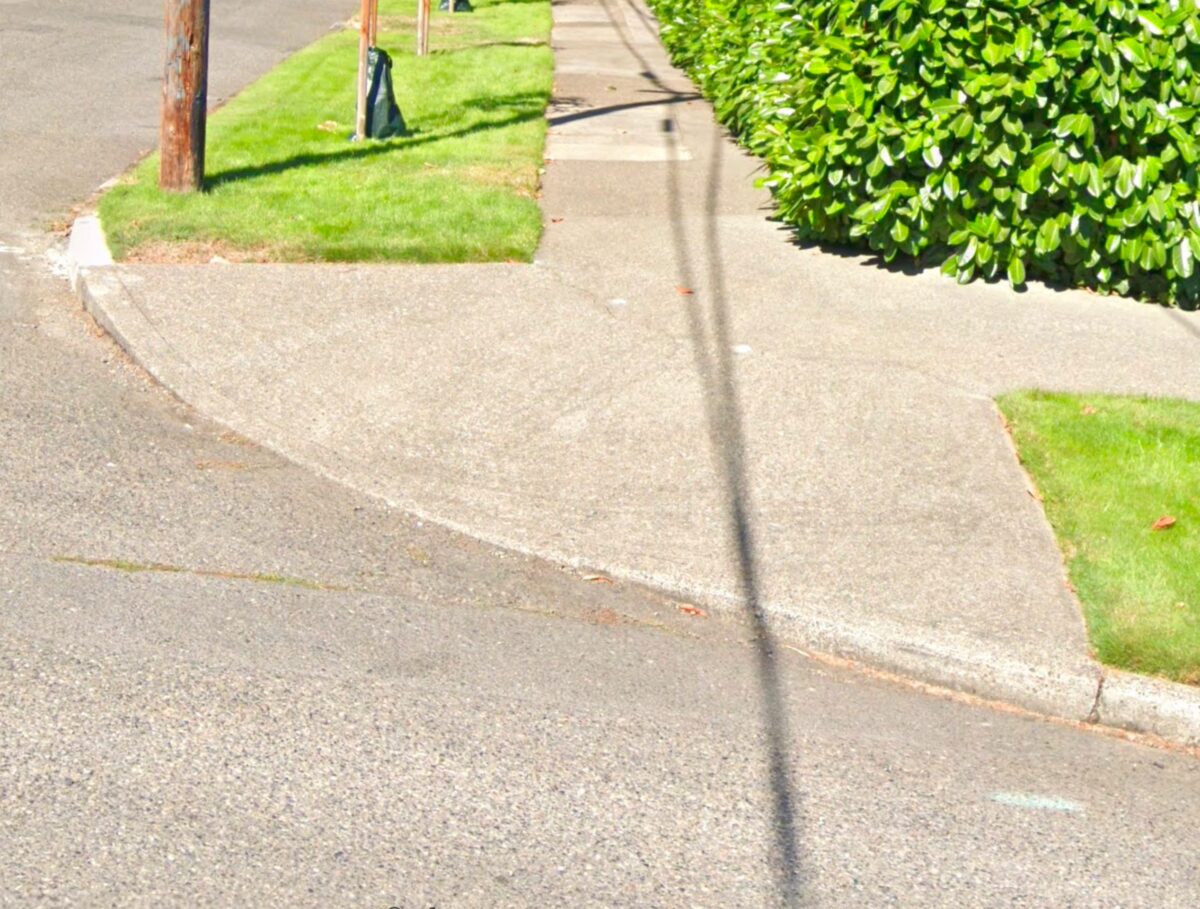
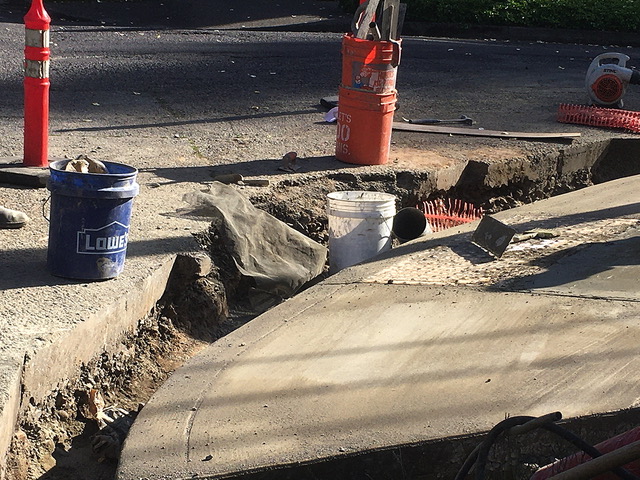
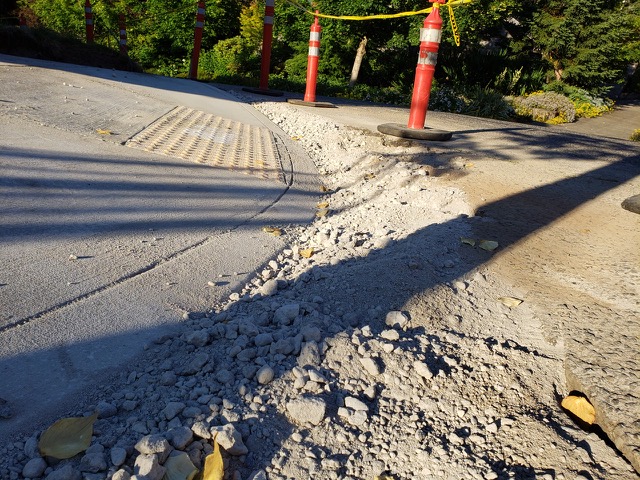



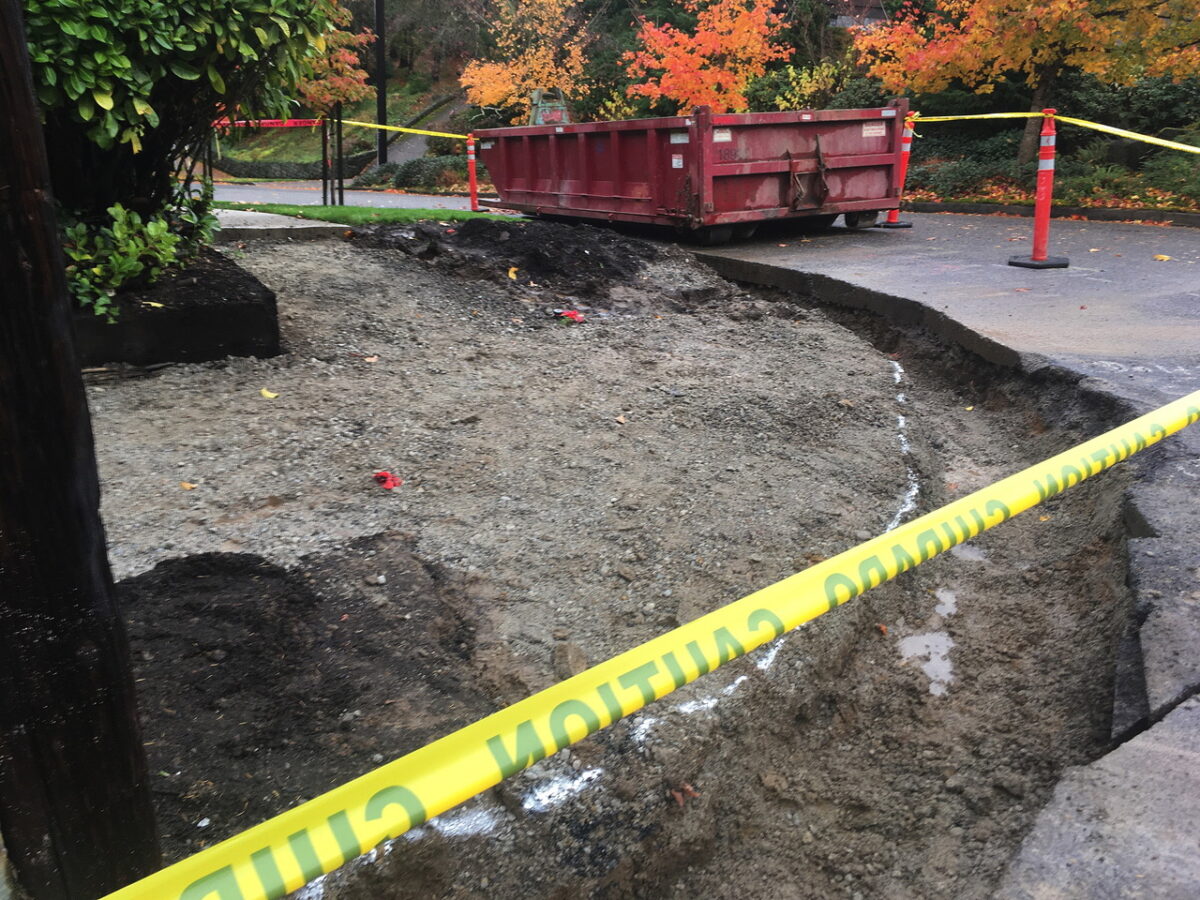
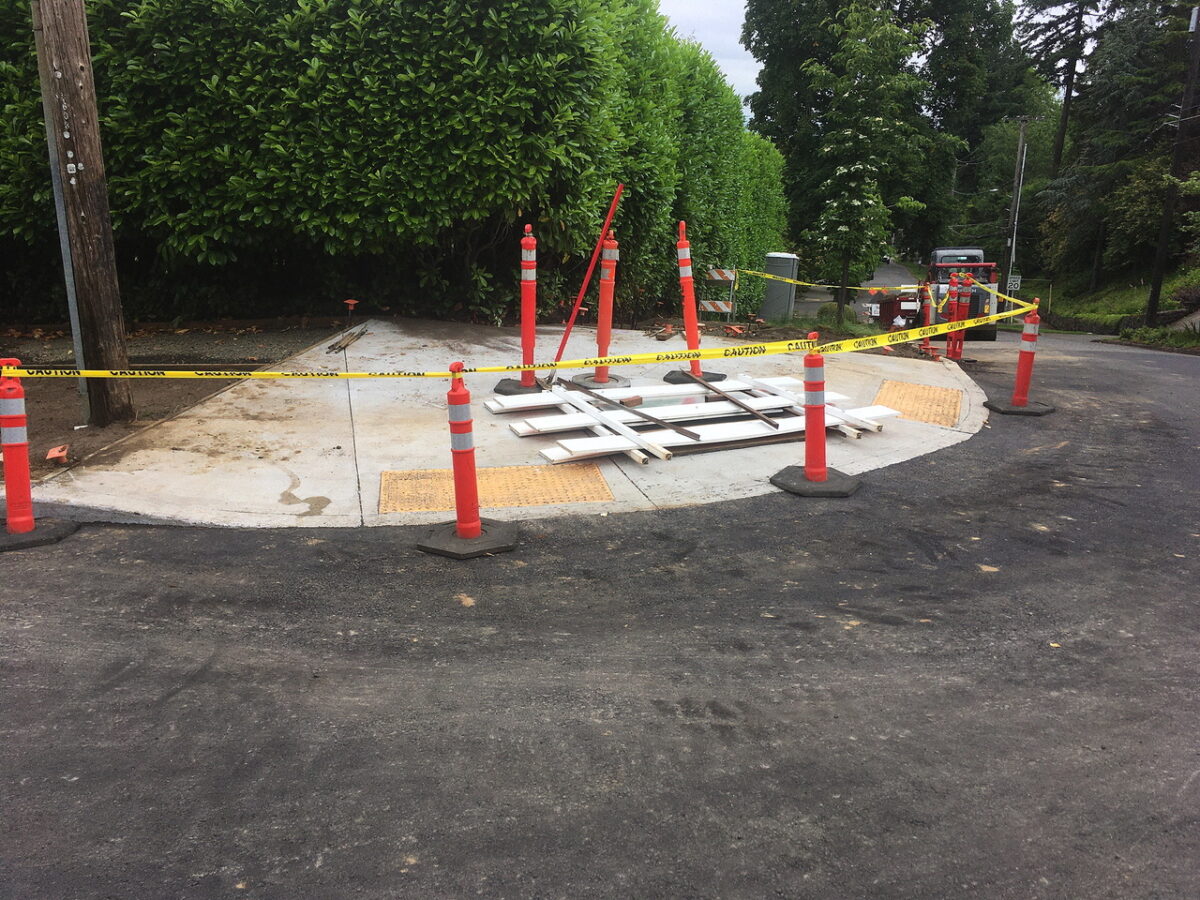
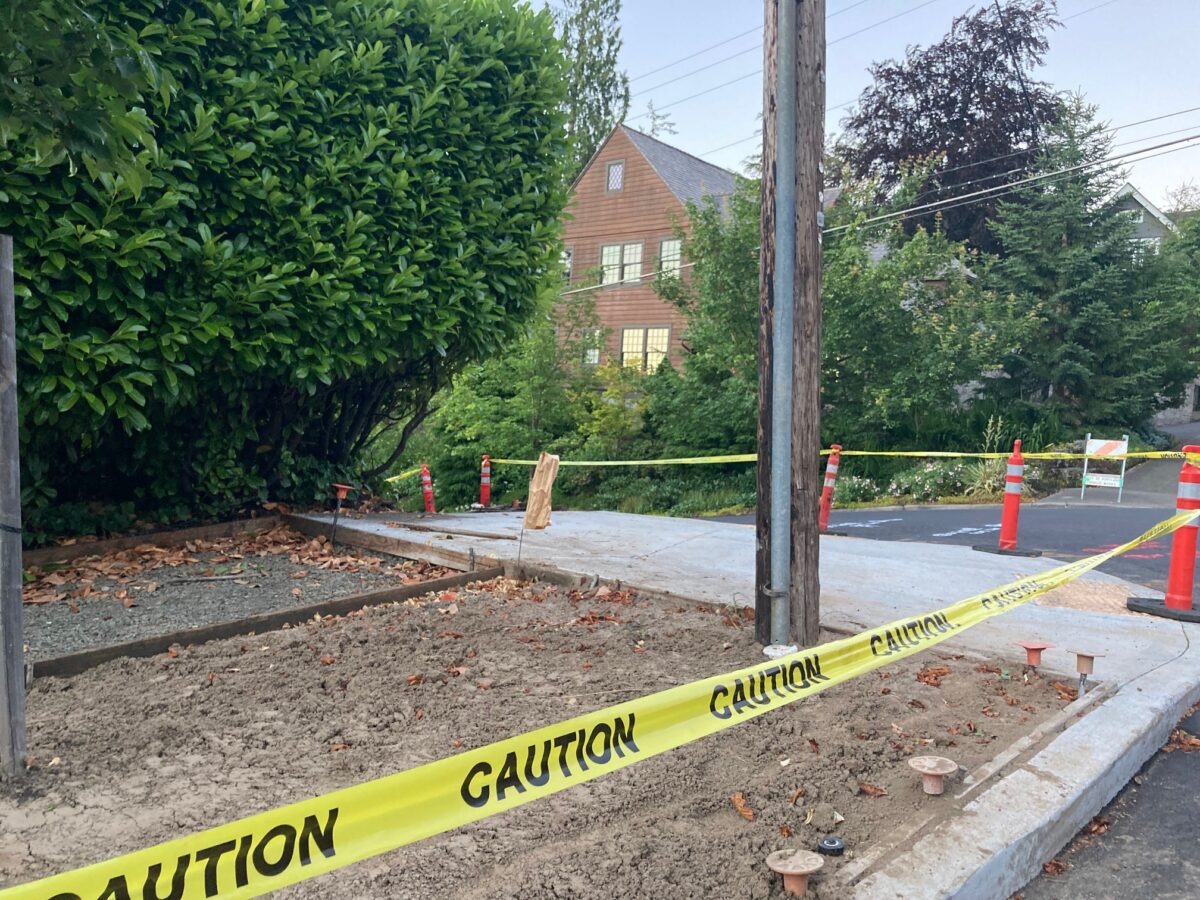

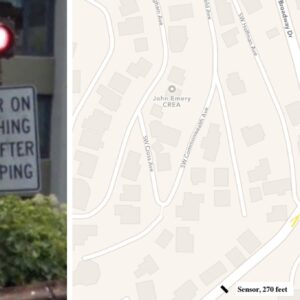


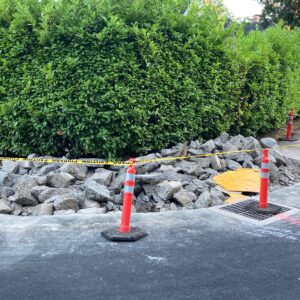
Thanks for reading.
BikePortland has served this community with independent community journalism since 2005. We rely on subscriptions from readers like you to survive. Your financial support is vital in keeping this valuable resource alive and well.
Please subscribe today to strengthen and expand our work.
I wonder, might they have been training new crews on how to fix ramps, pour concrete, build forms, etc?
I agree this is a waste of public resources, but nothing compared to building billion dollar freeways and then effectively having to rebuild them 20 years later.
ADA ramps are so ubiquitous, they are often construed as mundane, unfortunately. But they never really are. Each and every one has its complications, each corner a different story. The allowable tolerances to meet ADA is near impossibly narrow between design, construction, and inspection.
But nonetheless, I think it shows that having an accessible society for all doesn’t come without the work. What might not matter for some can still be the biggest barrier for others.
Hi nic, just to be clear, I use ADA ramps and I think they are important. Important enough that someone should visit the site, look at the larger area and use common sense about how disabled people will travel through it.
The new ADA ramp nearest to me sends people across the street to an impassable fire hydrant.
The city has limited resources, so these will probably be the ADA ramps in place for the remainder of my life. A new ADA ramp should not make things more difficult than what was there before.
I agree with you nic, every ramp has a different story. This particular ramp I would rank on the “difficult” side to design and construct due to the steep slopes in the intersection. Many ramps are straightforward. This one not so much. Wasting time/money (whether public or private) is never something to be proud of.
https://goo.gl/maps/spatJiA5T2FvwoCVA
Nic – great comments…it can be a frustrating process for all…especially for these very complex retrofit locations with limited area to work in (ROW)…and then if the project management is fragmented…remote city staff oversight of remote consultants;…glad to hear they are expanding the work area to meet the grade and slope constraints…to make it easier to construct successfully.
I appreciate your stories, Lisa, and hope that city leaders and voters alike are reading them, too.
Lisa, I emailed you another ramp redo story. As I indicated, I don’t think it would be prudent to publish the photo. I didn’t do any subsequent research into what happened.
“However, at some point(s) the city has to have touched the process”
Ay, there’s the rub. Assuming a contractor or sub did all the survey, design, and ground work, at some point a city inspector must come out to inspect the forms the concrete is poured into. Apparently, as long as the FORM matches the PLANS, the city says “Okilydokily!” and it gets poured. The process doesn’t seem to include a way for someone to point out it don’t look right. So Final inspector comes out and says “Dear god no.”
Imagine paying to have someone design and build a plane for you, they don’t draw wings on the plans, and you say ‘well, build to plan!’ Then you get pissy when they build and deliver a wingless plane.
Whose fault is it, really?
As far as difficulty in meeting all the ADA rules, the feds have a waiver to do as best as one can in difficult situations. Or they tell you to close the intersection…
It’s too bad there’s not more flexibility (or maybe there is, but the City is missing it) with these required upgrades. That corner (per the google map link in Paul’s comment) already had had the curb removed (meaning it was redone sometime after ADA rules into effect) so was at least somewhat accessible.
The new corner (that got torn out) although apparently not 100% code compliant, was even more accessible, and the next one (also torn out) may have been NEARLY perfect.
If only the upgrade money could have been shifted to any of the literally thousands of sidewalks and corners here that aren’t accessible at all, and that many more people who need accessibility would benefit from.
“Somewhat.”
Yes, somewhat, meaning that it wasn’t compliant with current standards, but was better than hundreds or thousands of sidewalk corners in Portland. I’d like to see the City have flexibility to spend the money making totally inaccessible spots accessible, rather than making somewhat accessible ones totally current-code compliant.
And there is precedent in that in ADA regulations. When renovating a building triggers upgrades, there’s some flexibility in choosing what gets upgraded, so the parts of the building and site that need upgrading the most can be prioritized (at least partially). That could happen with sidewalks if there were a way to define the “site” needing upgrades as the whole ownership, which would be Portland’s whole sidewalk network, versus just the sidewalks at the immediate location of the work that triggers upgrades.
There are plenty off truck sized loopholes in the ADA. I don’t know them all, I am not an ADA lawyer. Some builders always seem to find them, though.
It is frustrating…speaking as a homeowner (seeing a city reconstruct functional modern ADA ramps – 2006 – for a new set (2021) that function no better (and potentially worse due to catching mud and storm debris)…where are this post construction inspections BEFORE releasing the retained construction bond?!
And speaking as a transportation planner (with complete streets & ADA PROW experience) the real missed opportunity in our “industry” is looking at every pedestrian intersection as only a corner “ramp” solution versus expanding the area to include a raised crossing or intersection…IF the traditional ramp solution fails.
Yes it can blow up a budget…especially storm drainage…but ‘we’ are designing a ~100 year facility for a federally mandated requirement (vs there ‘really is no federal requirement’ for faster car access or higher car volumes…those are typically locally set/ administratively adopted and based on state or federal ‘guidelines’).
Thank you for the comments, Todd. I ran this story by a close friend who was a print journalist for many decades, but who is now severely disabled. His words of wisdom to me were, “Lisa, every story is a metaphor.”
So what is this story a metaphor for? For me, it’s about more than just ADA ramps. It’s about supposed efficiencies in work flow that end up being inefficient, the daisy chain of subcontractors, inadequate oversight and communication up the chain. The men pouring the concrete know the form is wrong, every passerby can see that the form is wrong. But the pour happens anyway because the men doing the work don’t seem to have a way to communicate “no go.”
But it is also about the way transportation gets funded, piecemeal, in disjointed projects. You can’t fund a whole network, so it’s done corner by corner, ramp by ramp.
Instead of rebuilding cutouts that already exist and function, why doesn’t the money get spent on filling in gaps where sidewalk is missing?
There is a law that states when a street is disturbed to a certain extent, nearby corners must get ADA improvements – even if there was an ADA structure before, it may not meet current code, so it gets replaced. I’d say upgraded, but between the new plastic bumpy bits (to alert people they are in the proper place) which are slippery when wet, and the fact that the older ramps often blended into adjacent sidewalk grades more gracefully, it isn’t always one.
The bumpy bits are for blind people, by the way. You are correct, the ADA code is constantly being updated – what was OK in 1992 isn’t so good today, 30 years later. ADA is federal law and cities sometimes get sued by the DOJ if they don’t follow the law – even the threat of a federal lawsuit makes cities sweat – hence the frequent prioritizing of dead-end pointless ADA ramps over useful sidewalk infill. You see it nationwide. It’s not that sidewalk infill isn’t important – it is vital in nearly every community with poor residents who must trudge to work – it’s just mundane and not as exciting as new bypasses, $5 Billion bridges, expensive fancy bike bridges, rebuilding downtown sidewalks for the 15th time, and so on.
“Constantly?” That… seems like a little bit of an overstatement, David.
That is hardly “constantly.”
There are so many things wrong with what you just said, I don’t even know where to begin. *** Moderator: Deleted last sentence, disrespectful ***
The contact info for the project is right there on the project info page you linked to. Did you try contacting them to find out any details on this?
This is my question too. Interesting/sad article but would have been much better if you got feedback from the city on this.
i didn’t write the article, but i can assure you that multiple people, from pr flack to council member, have been contacted by several parties about this. the only response to date (from project contact) has been ‘ramps need to meet strict rules’ with no acknowledgement of questions raised.
Hi Ten and Scott below,
Thank you for the feedback.
I have a lot more information about this than I put in the article. And I thought about what the scope of the article should be, and also what was its purpose.
I decided that the article’s purpose wasn’t to solve a mystery, or discover what went wrong, or at whom a finger should be pointed. Even if I had tried to do that, this involves two, possibly three bureaus, and many subcontractors. In fact, the “contact info” you mention being on the project info page goes to a contracted PR firm.
So I deliberately limited the article to documenting inefficiencies. That’s what I consider the important part.
Fair enough. It is inefficient, but government often is. In my own community, corner ramps and short sidewalk segments are some of the few projects that can be easily subcontracted out to small minority and women-owned businesses just starting out on bidding on government contracts, so this sort of inefficiency can serve various intended and unintended purposes that we might not realize at first sight. I’m not saying that this is one of those cases, but should you investigate further, you might check into the status of the contractor, to see if it is MWBE.
“mwbe.” it is. with multi-state and years-long experience. they pointed out first attempt was wrong. ‘pour to plan’ was response.
MWBE = Minority and Women Business Enterprise. Your pun is tone deaf.
not a pun. was just partially quoting your post and responding in affirmative. sorry it wasn’t clearer.
This happens frequently in my inner southeast neighborhood. Meanwhile other parts of Portland don’t even have sidewalks.
I see the author, Lisa Caballero, noted in the comments that the aim was to highlight the inefficiencies of this process. Her argument/case is strong. It does seem both a lengthy and costly project.
Taking a step or two back to get a bigger picture view, we can see that historically cities have been designed without engaging with persons with disabilities or considering their needs, and thus you have many examples of physical or environmental barriers that prevent or deter persons with disabilities from participating in community life on an equal basis with others, and this of course includes transit/transportation.
I guess my first point is this: if we involved persons with disabilities at the outset of the design / construction continuum then we’d be more likely to have accessible infrastructure that doesn’t need to get redone multiple times. It would, of course, also be a hell of a lot cheaper. I also note, that many persons without disabilities, if given the choice, will opt for accessible design choices than inaccessible ones. persons with disabilities are not the only folks who benefit from accessible design.
I appreciate that the ADA standards have evolved, and what may have been sufficient in 1992 may not longer be deemed up to code now, and I appreciate that does make design and construction issues more challenging.
I’ve never been at this particular intersection, so I can’t say what was or was not inadequate with the “before” picture. One potential challenge though, generally with the kind of multi-directional ramp depicted is that someone using a chair that could potentially have difficulty if they navigated toward one of the edges – as that could cause them to tip over. and if they were able to navigate on the smoothest surface (ie the middle of the ramp) that would put them toward the center of the intersection as opposed to the shortest way to the other corner. This is why two curb-cuts (or – as is the case in the new version – much wider curbcuts with the addition of the dots to ensure access for persons who are blind or low vision) are definitely better.
And just to put a related pedestrian design topic on the community radar: new marked ADA ramps at intersections will need a much higher minimum lighting level even with brand new LED lamps installed a year or two ago…we are struggling with this “over lighting” with the new higher performance (lumens) and higher temperature ‘bulbs’ (>4000k) in use now…the new Columbia Street protected bikeway is triggering this in August for Vancouver. (The single new LED lamp installed in 2020 allowed us to read the newspaper at our kitchen sink window for the first time…we now wonder how it will be with 3 more similar lamps added to each non-signalized intersection.)
Do you see the recent article in the Atlantic about how light and noise pollution affect the critters we share the world with? Good article.